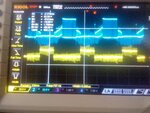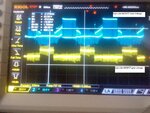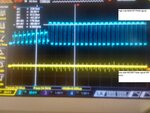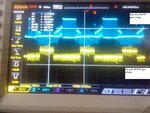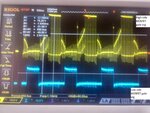BoopathiS
Member level 2

Hi,
Issue :
I'm running blower 3phase bldc motor with hall effect sensor feedback using ir2110 driver. Motor producing more noise which is affecting other digital circuits.
Operating Parameter :
Running motor driver with 50kHZ PWM frequency.
Input supply 24VDC
Actions did :
1. Added high decoupling capacitor(470uF) with ceramic(0.1uF) at 24V,
2. Added 25MHZ ferrite bead(don't know, is this suitable one or not), Guide me how to choose ferrite bead..
3. Used shielded cable
still facing same issue....
I want to avoid this noise signal from blower.
Please provide me some suggestion to resolve this issue.
Issue :
I'm running blower 3phase bldc motor with hall effect sensor feedback using ir2110 driver. Motor producing more noise which is affecting other digital circuits.
Operating Parameter :
Running motor driver with 50kHZ PWM frequency.
Input supply 24VDC
Actions did :
1. Added high decoupling capacitor(470uF) with ceramic(0.1uF) at 24V,
2. Added 25MHZ ferrite bead(don't know, is this suitable one or not), Guide me how to choose ferrite bead..
3. Used shielded cable
still facing same issue....
I want to avoid this noise signal from blower.
Please provide me some suggestion to resolve this issue.



